Chugach National Forest
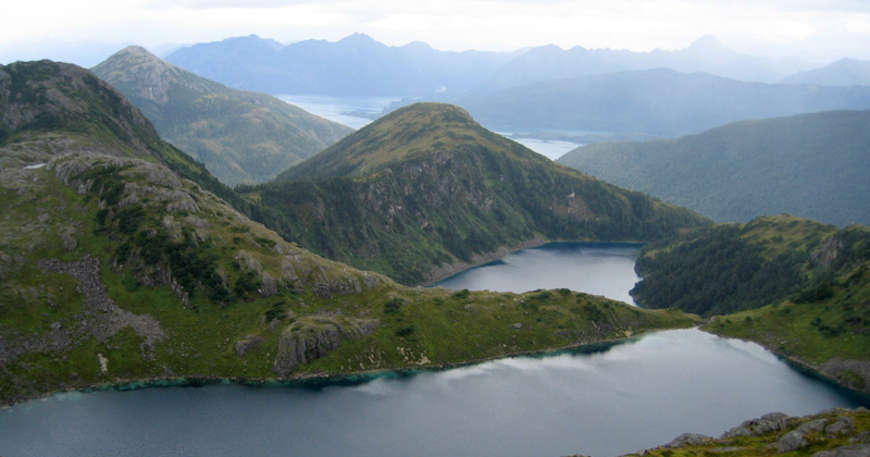
In Chugach National Forest
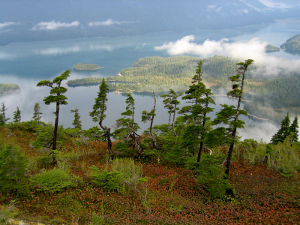
When it was first established by President Theodore Roosevelt in 1907, Chugach National Forest was composed of about 23 million acres. Reduced several times since, the remaining 6.9 million acres are located in the Chugach Mountains surrounding Prince William Sound and includes the delta of the Copper River and the eastern part of the Kenai Peninsula. To the west on the Kenai Peninsula is Kenai National Wildlife Refuge with Kenai Fjords National Park to the southwest. Chugach State Park is to the northwest, separating the forest from the city of Anchorage. To the northeast of the Copper River Delta area is Wrangell-St. Elias National Park and Preserve.
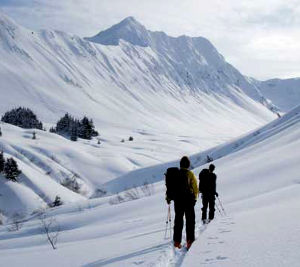
Heading into Turnagain Pass
Technically, the forest is classified as a temperate rain forest as it occupies an area that receives heavy precipitation year-round in a narrow strip that rises from the ocean to the icy interior alpine zone. About one-third of the designated forest area is ice and rock. As a "sub-polar rainforest," Chugach National Forest is dominated by western hemlock, mountain hemlock and sitka spruce. The Chugach is the northernmost of the US Forest Service properties.
There are forty-one rentable cabins on Chugach National Forest and fifteen campgrounds. There are hundreds of miles of maintained hiking trails in the forest but travel everywhere depends a lot on the season: Most areas hold snow well into June and the avalanche danger can be very high for months on end. A lot of folks explore the area using canoes and kayaks, journeying around among the 3,500 miles of shoreline on Prince William Sound. Roads only go so far in Alaska and because the Chugach is so close to Anchorage, the roads are often jam-packed with fishermen when the salmon are running. Many folks also go for the world-class rainbow trout, grayling and bottomfish...
For the wildlife/wilderness enthusiast, a bad day on the Chugach is better than an incredible day virtually anywhere else. With that in mind, there is a plethora of local and native outfitters experienced, licensed and equipped to show you some of the finest Alaska has to offer in this world-renowned setting. And big game hunters come from all over the planet, looking for black bear, brown bear, moose, mountain goat, bighorn sheep and black-tailed deer.
While large portions of the Forest would qualify for Wilderness designation, there are no officially designated wilderness areas on the forest. There are only about 5,000 acres of the Forest withdrawn from potential mining consideration. Those 5,000 acres are in the region of Kenai National Wildlife Refuge and have been withdrawn to preserve the water resources that feed into the Russian River and the upper Russian Lake Recreation Corridor.
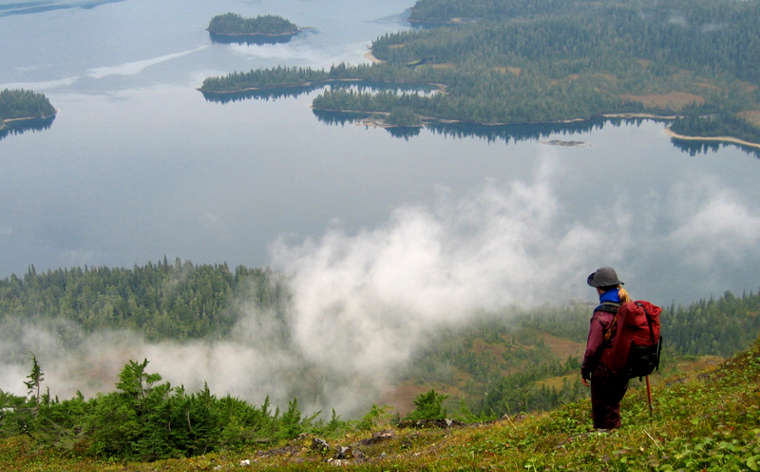
Prince William Sound, Chugach National Forest
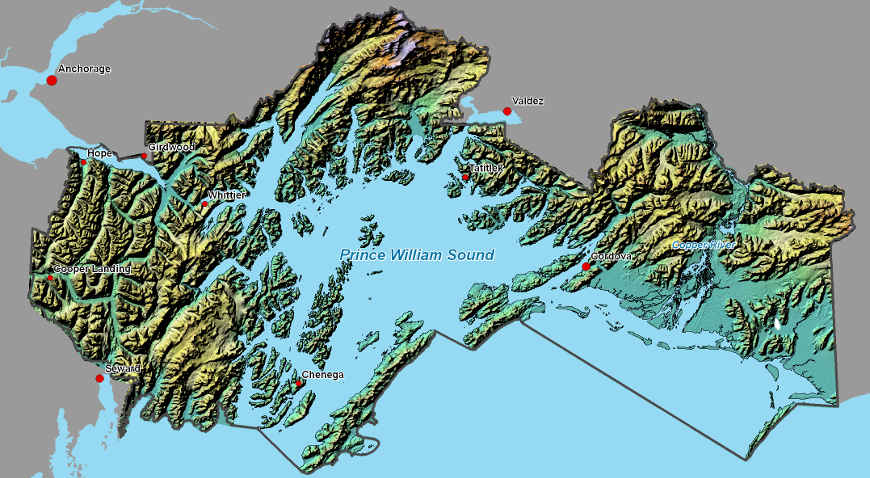
Turnagain Pass photo courtesy of Connie Hubbard, US Forest Service
Relief map courtesy of Wikipedia userid Vedrfolnir, CCA-by-SA 3.0 License